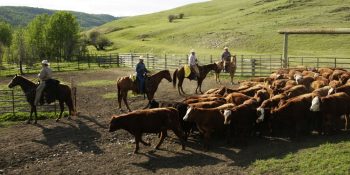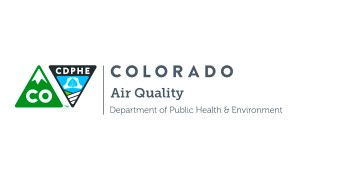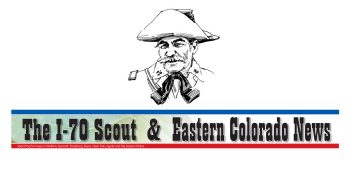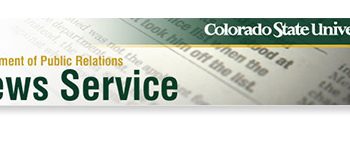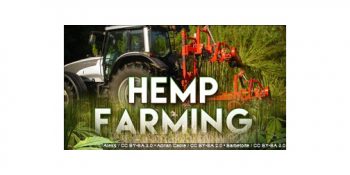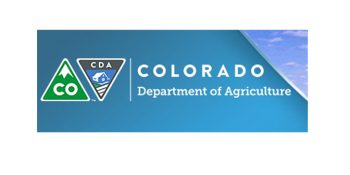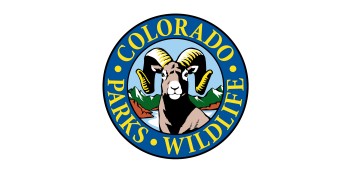DENVER – While a drone dropping peanut butter-flavored baits makes national headlines there’s an untold, Colorado-centric backstory on how those little blue baits came to be. It’s a story of creativity, trial-and-error experimentation, and a machine originally designed to make carp bait.
This time last year federal and state wildlife managers, hoping to deploy an anti-plague vaccine that may aid in efforts to recover the endangered black-footed ferret, had a problem: No one knew how to mass-produce the baits that carry the vaccine quickly and affordably enough to supply the demands for their expanding field vaccination campaigns.
Enter scientists from Colorado Parks and Wildlife, who already had been working behind the scenes on several fronts for years to advance the science on controlling plague on a limited geographic scale for conservation purposes.
“Until last spring, the production model for plague vaccine baits was akin to boutique fudge-making,” said Dan Tripp, a researcher with CPW. “Vaccination is only going to be practical on tracts of a few thousand acres or less where protecting prairie dogs from plague is the desired goal. But before we could even begin thinking about treating 1,000-acre blocks of habitat we needed a way to make more than a few hundred baits at a time. Cheap!”
Tripp, along with assistant Lucy Corro and Scott Stelting, a former USDA scientist now with CORE Formulations LLC, began experimenting with the vaccine bait formula and a relatively inexpensive piece of machinery called a “boilie roller” that is popular in Europe for making custom-made carp fishing baits.
“Our federal collaborators wanted bait balls that could be fed through a hopper carried by a drone,” said Tripp. “The original baits were like hand-crafted gummy cubes. We tried to make dried bait balls from the original recipe, but they were too brittle. So we had to experiment with ingredient proportions and timing to get everything working. Then it was time to fish or roll bait.”
By May 2016, the new techniques for mass-producing bait balls were in use at CPW and USDA facilities in Fort Collins. As a result, federal and state agencies’ vaccine bait needs for the ramped-up 2016 field season were met in a five-week production run. The resulting baits were small, light, and – most importantly – by autumn already successfully field tested in two different mechanical delivery devices. CPW also contributed directly to the ongoing design and development of mechanical delivery devices to streamline vaccine bait distribution.
And what about the blue color? A small field study that Tripp conducted in 2015 built upon work from the 1960s showing that prairie dogs seem to discern blue from other colors. Combining blue coloration with the scent of peanut butter seemed a good strategy for ensuring prairie dogs could locate smaller baits on the ground. Switching to the blue food-grade coloring also shaved costs and greatly simplified the bait production process.
Another unheralded player in the scaled-up anti-plague campaign is Colorado Serum Company, a federally-licensed vaccine company that has provided nearly a century of animal health care service. In 2015, Colorado Serum secured federal authorizations and agreements allowing the company to mass-manufacture the anti-plague vaccine.
“We had to find ways of coaxing the vaccine virus to multiply faster and in much larger quantities,” said Randy Berrier, vice president of technical services and business development with Colorado Serum Company. “We spent several months developing techniques to improve the vaccine yields, and succeeded just in time to meet all of the agencies’ needs for the 2016 field season. And we’re even more ready to be of service again in 2017.”
CPW and Colorado Serum also partnered last spring to make sure the new mass-manufactured vaccine baits still performed as well as the hand-made variety used in years past. A CPW study in captive prairie dogs that began last June showed the commercial-source vaccine was still safe in prairie dogs and stimulated antibody responses as expected.
And as a final testament to Colorado’s commitment to combating plague for wildlife conservation purposes, the efforts undertaken to scale-up vaccine bait manufacturing for the benefit of wildlife in Colorado and elsewhere were largely paid for through the state’s Species Conservation Trust Fund thanks to annual severance tax funding authorized by the Colorado General Assembly.
Colorado’s wildlife managers have been especially motivated to make plague control tools more widely available because three of the nation’s four prairie dog species call Colorado home. All three species have at some point in the recent past been considered for federal listing as threatened or endangered.
Plague, a disease once exotic to Colorado, is currently the single greatest threat to the few remaining strongholds for prairie dogs. Plague outbreaks also have caused repeated failures in federal attempts to restore the black-footed ferret, a species that depends on prairie dogs for survival.
“We are very optimistic that this new tool to combat sylvatic plague in prairie dog colonies will work not only for the benefit of black-footed ferret recovery, but also for the private landowners who are voluntarily working to recover the species. Additionally, these efforts will be potentially beneficial in ensuring that prairie dog species are not federally listed,” said Ken Morgan, private lands program manager with CPW. “We are especially indebted to the local governments and willing landowners who have been cooperating in implementing these conservation measures for the benefit of the entire state.”
“I hope Coloradans will take pride that our CPW and private sector partners stepped up in such a pivotal way to advance this conservation tool,” said Bob Broscheid, director of CPW. “This embodies Gov. Hickenlooper’s commitment to effective, efficient and elegant work in state service.”
Read more about the story of vaccine bait mass-manufacturing in a new research letter just published in the Journal of Wildlife Diseases.
